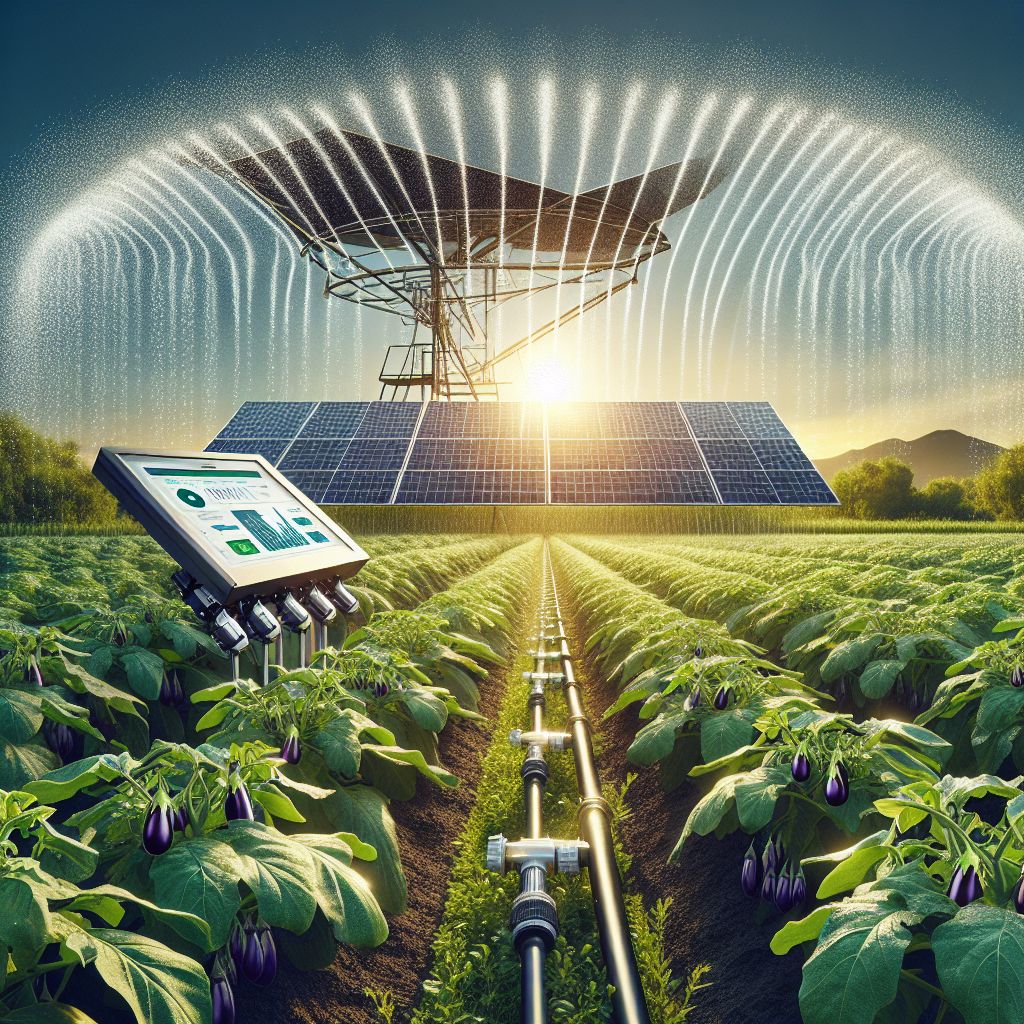
When it comes to sustainable farming, one of the most innovative ways to enhance efficiency and support the environment is through solar-powered irrigation systems. This method not only conserves water but also harnesses the sun’s energy, a free and abundant resource, to power the irrigation of crops like eggplant. It’s a game-changer for farmers looking to reduce costs and promote eco-friendly practices.
Let’s delve into how these systems work and the benefits they offer. By the end of this guide, you’ll have a clear understanding of why solar-powered irrigation is not just a smart choice, but a necessary step towards sustainable agriculture.
Key Takeaways
Solar-powered irrigation systems are cost-effective and reduce the carbon footprint of farming.
Drip and sprinkler systems are two common irrigation methods suitable for eggplant cultivation.
Choosing the right type of solar panel depends on factors like efficiency, cost, and installation flexibility.
Combining solar panels with irrigation systems can maximize yield and efficiency in eggplant farming.
Automated monitoring and smart irrigation techniques can further optimize water and energy use.
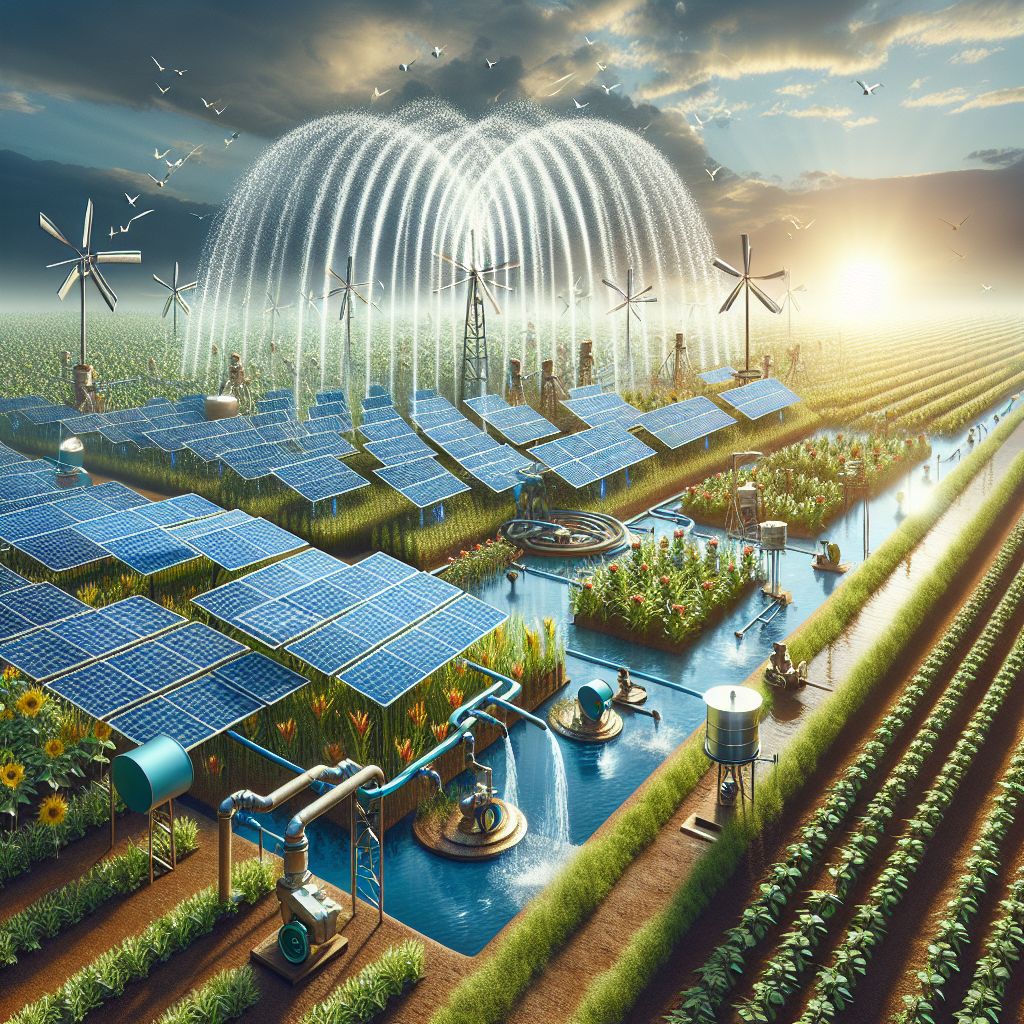
Why Combine Solar Panels with an Irrigation System
Imagine a farm where the energy from the sun not only nourishes the plants but also powers the very system that waters them. It’s not science fiction—it’s the smart integration of solar panels with irrigation systems, and it’s revolutionizing the way we approach farming.
Understanding the Synergy between Solar Energy and Water Management
At the heart of this synergy is the simple concept that the sun can provide more than just light. Solar panels convert sunlight into electricity, which can then be used to run irrigation pumps. This process eliminates the need for grid electricity or fuel-powered generators, cutting down on greenhouse gas emissions and reducing the farm’s carbon footprint.
Environmental Benefits of a Solar-Powered Approach
The benefits of using solar energy extend beyond cost savings. By relying on a renewable energy source, you’re also:
Conserving water through precise irrigation control.
Reducing reliance on non-renewable energy sources.
Minimizing soil erosion and water runoff with targeted watering methods.
Long-Term Cost Savings for Farmers
While the upfront cost of solar panels may seem daunting, the long-term savings are substantial. Solar panels have a lifespan of around 25 years, and after the initial investment, the energy they produce is virtually free. Over time, the cost savings on electricity alone make this a financially savvy choice for farmers.
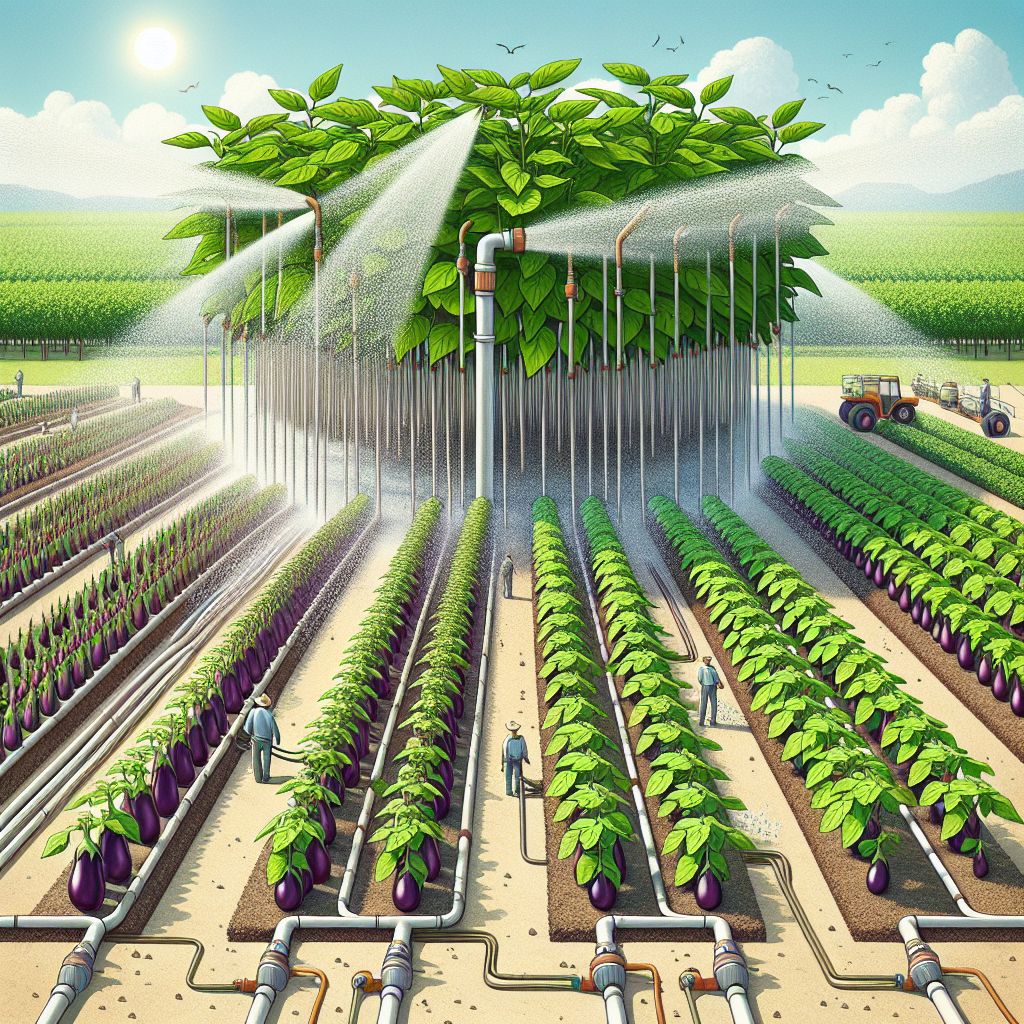
Different Irrigation Systems Used to Grow Eggplant on a Farm
Eggplants, like any crop, thrive when given the right amount of water. But not all irrigation systems are created equal. The two most common types used in eggplant farming are drip and sprinkler systems, each with its own set of advantages.
Assessing Drip versus Sprinkler Systems for Eggplant Cultivation
Choosing the right irrigation system is crucial for the success of your crop. Here’s a quick rundown:
Drip Irrigation: Delivers water directly to the base of the plant, minimizing evaporation and runoff. It’s efficient and water-conserving, making it ideal for areas with water scarcity.
Sprinkler Irrigation: Mimics rainfall by spraying water over the plants. It’s suitable for larger areas and can also help reduce the temperature in hot climates, benefiting the eggplants.
Here is a table summarizing the pros and cons of different irrigation systems for growing Eggplants:
|
Irrigation System |
Pros |
Cons |
|---|---|---|
|
Drip Irrigation |
– Efficient water usage, minimizes evaporation and runoff. 1, 3, 4 |
– Initial installation can be expensive. 1, 3 |
|
Sprinkler/Overhead |
– Inexpensive to install. 1, 4 |
– Promotes foliar diseases on pepper plants. 1, 4 |
Customizing Irrigation Schedules for Optimal Growth
Once you’ve selected the right system, the next step is to tailor your irrigation schedule. Eggplants require consistent moisture, especially during flowering and fruit setting. Use soil moisture sensors and weather forecasts to adjust your watering schedule, ensuring your eggplants get just the right amount of water at the right time.
Example: A farmer in a semi-arid region opts for a drip irrigation system powered by solar panels. By doing so, they cut their water usage by 50% and reduce their energy costs, all while maintaining a healthy and productive eggplant crop.
Stay tuned for the next sections where we’ll dive into the types of solar panels that pair best with irrigation systems and how to make the most efficient combination for your eggplant farm.
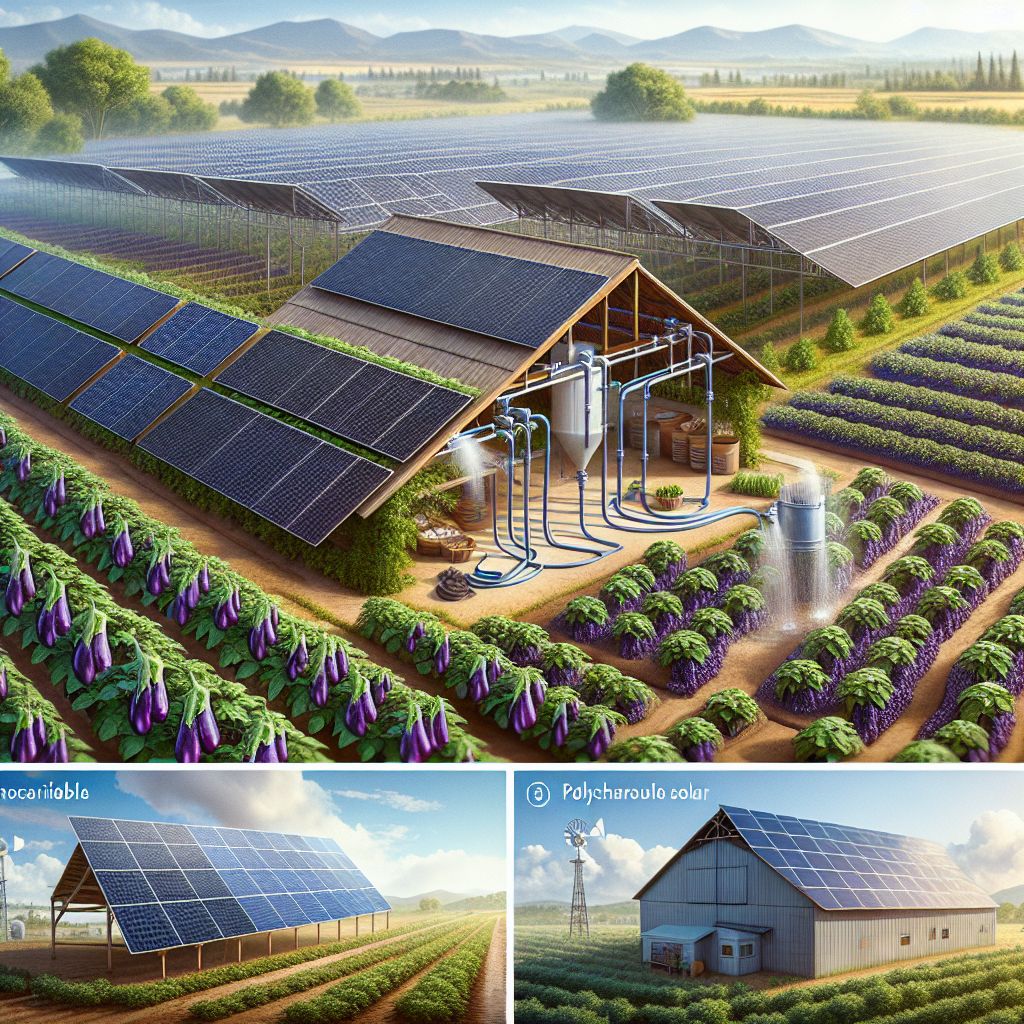
Different Solar Panels You Can Add to the Irrigation System to Grow Eggplant on a Farm
Growing eggplant on a farm requires a consistent water supply, especially during the hot summer months. Relying solely on traditional irrigation methods can be costly and unpredictable. Enter solar panels – a sustainable and cost-effective solution to power your eggplant irrigation system. But with so many options available, how do you choose the right solar panel for your farm? Let’s take a look the them.
Monocrystalline Panels: Efficiency Meets Eggplant Farming
Monocrystalline solar panels offer higher efficiency compared to other panel types, making them well-suited for agrivoltaics systems that combine solar energy generation with crop cultivation like eggplant farming. The high efficiency of monocrystalline solar panels complements eggplant farming in agrivoltaic systems by maximizing energy generation while providing suitable shading conditions that can boost eggplant yields, making efficient use of available land resources.
Polycrystalline Panels: Cost-Effective Options for Irrigation
When budget is a primary concern, polycrystalline solar panels offer a balance between efficiency and affordability. These panels are made from multiple silicon crystals, which makes them slightly less efficient than their monocrystalline counterparts. However, they come at a lower price point, making them an accessible option for farmers who are just starting to integrate solar power into their irrigation systems.
Polycrystalline panels are durable and perform well in a variety of climates, though they may require more space to generate the same amount of power as monocrystalline panels. For a farm growing eggplants, which don’t have the highest water demands, these panels can provide sufficient energy to run a drip or sprinkler irrigation system without breaking the bank.
Moreover, polycrystalline panels have a blue hue and a speckled look, which is a result of the light reflecting off the silicon fragments. While aesthetics might not be a top priority for a farming operation, it’s worth noting in case the farm is part of agritourism or if the appearance of the farm is important for other reasons.
Thin-Film Solar Panels: Flexible Installation Options
Thin-film solar panels are a newer technology that stands out for its flexibility and lightweight design. These panels can be applied to a variety of surfaces, including those that aren’t flat, making them versatile for farm structures that might not support traditional panels.
They are less efficient than both monocrystalline and polycrystalline panels, which means they require more area to generate the same amount of power. However, their ease of installation and the ability to cover large areas like a warehouse roof or the side of a barn can offset this drawback.
Right below is a table looking at different solar panel options:
|
Solar Panel Type |
Efficiency Range |
Advantages |
Disadvantages |
|---|---|---|---|
|
Monocrystalline |
17-22% |
Highest efficiency, space-saving, long lifespan. 2 | |
|
Polycrystalline |
15-17% |
Lower efficiency, requires more space. 2 | |
|
Thin-Film |
10-13% |
Lightweight, flexible, good temperature coefficient. 2 |
Lowest efficiency, requires large area. 2 |
Monocrystalline panels provide the highest efficiency in a compact area but at a higher upfront cost (2, 3). Polycrystalline panels offer a balance of efficiency and cost (2, 3). Thin-film panels have lower efficiency but perform better in high temperatures (2). The optimal choice depends on factors like available space, budget, local climate conditions, and specific irrigation requirements for eggplant.
What is the Best Solar Panel to Use with an Irrigation System on a Farm
So, what’s the best solar panel for an eggplant farmer’s irrigation system? The answer depends on several factors, including budget, available space, and specific energy needs.
For most eggplant farmers, the best choice will likely be a balance between efficiency and cost. In many cases, polycrystalline panels provide the right mix, offering adequate efficiency for irrigation needs without a hefty price tag.
However, if space is a concern and budget allows, monocrystalline panels might be the way to go. On the other hand, if installation flexibility is a priority and you have plenty of space to spare, thin-film panels could be the perfect fit.
Selecting the Right Solar Panel Technology for Agriculture
Selecting the right solar panel technology for your farm isn’t just about the type of panel. You’ll also need to consider the total wattage required to run your irrigation system, the orientation and tilt of the panels for maximum sun exposure, and any local incentives or rebates for renewable energy installations.
For instance, if your farm is located in an area with high sun exposure throughout the year, you might be able to get by with less efficient panels, while a farm in a region with less consistent sunlight might benefit from the higher efficiency of monocrystalline panels.
Integration of Solar Technology with Existing Irrigation Infrastructure
Integrating solar technology with your existing irrigation infrastructure doesn’t have to be an overwhelming task. Start by assessing your current energy consumption for irrigation and then work with a solar professional to determine the best solar setup to meet those needs.
It’s important to ensure that your irrigation controllers, pumps, and sensors are compatible with the solar energy system you choose. Many modern irrigation systems are designed to work seamlessly with solar power, but older systems may require some modifications or upgrades.
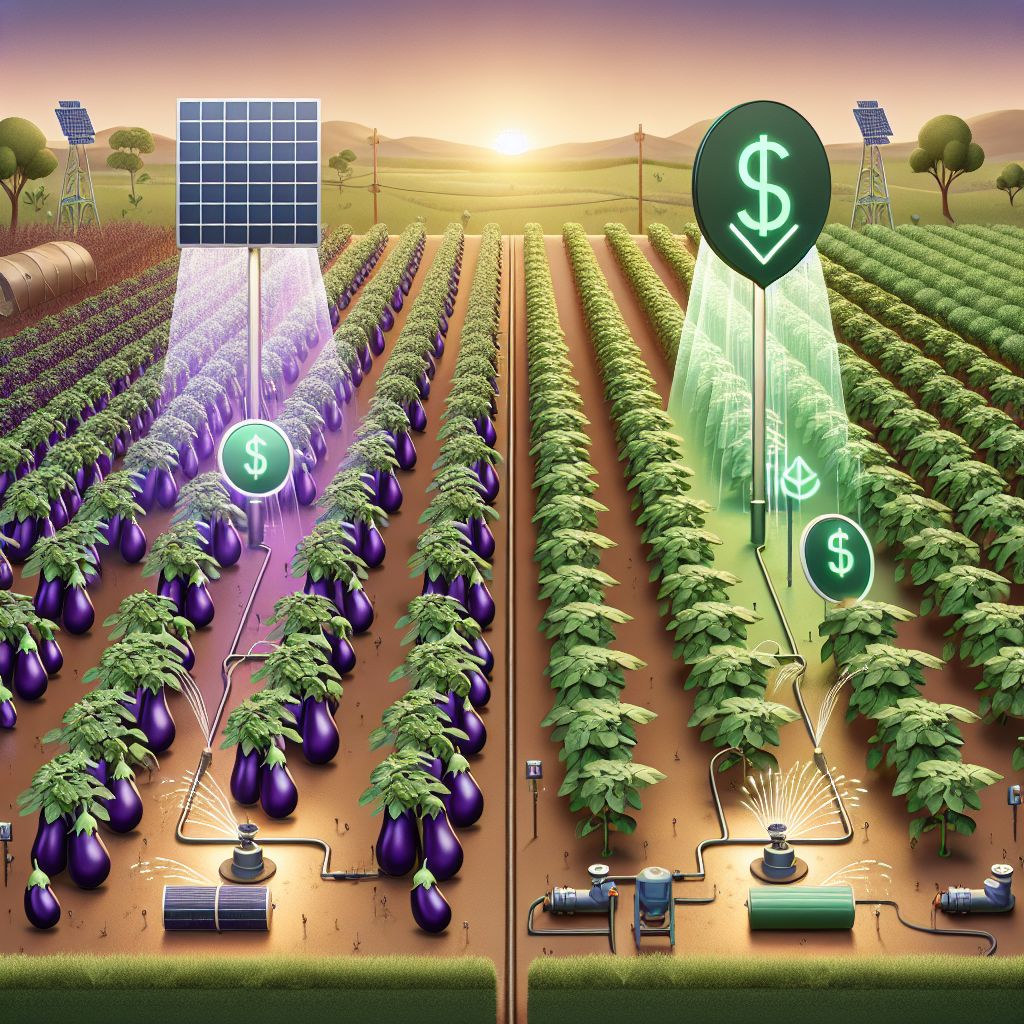
Cost and Increased Efficiency in Growing Eggplant: Solar Irrigation Systems Versus Regular Irrigation Systems
Now, let’s talk about the bottom line. How does a solar irrigation system stack up against a regular, grid-powered system in terms of cost and efficiency? The initial setup for a solar irrigation system can be more expensive due to the cost of solar panels and batteries if needed. However, the ongoing operational costs are significantly lower.
Analyzing the Return on Investment for Solar-Powered Systems
The return on investment (ROI) for solar-powered irrigation systems can be quite attractive. After the initial outlay, the cost to run the system is minimal, as sunlight is free. Additionally, maintenance costs for solar panels are relatively low. Over time, the savings on energy costs can be substantial, making the ROI for solar irrigation systems potentially very high, especially as energy prices continue to rise.
Moreover, many governments offer incentives for renewable energy installations, which can further improve the ROI. These might include tax credits, rebates, or even grants, all of which can significantly offset the upfront costs.
This table compare the pros and cons of solar-powered irrigation systems and conventional irrigation systems:
|
Aspect |
Conventional Irrigation System |
Solar-Powered Irrigation System |
|---|---|---|
|
Pros |
No ongoing energy costs, uses free solar power. 5 | |
|
Simple installation and maintenance. 1 |
Environmentally friendly, reduces carbon footprint. 3 | |
|
Reliable water supply even during power outages. 5 | ||
|
Long lifespan of solar panels (25-30 years). 5 | ||
|
Cons | ||
|
Susceptible to power outages. 5 |
Requires some technical knowledge for installation/maintenance. 3, 4 | |
|
Environmental impact from energy use. 3 |
Risk of over-abstraction of groundwater if not managed properly. 3, 4 | |
|
Potential for water waste/inefficiency. 1 |
Comparative Energy Consumption and Efficiency
When it comes to energy consumption, solar irrigation systems are far more efficient than traditional systems. They utilize the direct current (DC) produced by solar panels more effectively, as most irrigation pumps run on DC power. This reduces energy loss that occurs when converting from alternating current (AC) from the grid to DC for the pumps.
Efficiency also extends to water usage. Solar irrigation systems, particularly when paired with drip irrigation, can be finely tuned to the needs of the crop, reducing water waste and ensuring that each eggplant gets just the right amount of water it needs to thrive.
Case Studies: Best Practices in Solar Irrigation Implementation
Real-world examples highlight the success of solar-powered irrigation systems in eggplant farming. For instance, a farm in California switched to solar-powered drip irrigation and saw a 20% increase in eggplant yield while cutting water usage by 35%. Another case in Spain involved a farm that installed solar panels to power their sprinkler system, resulting in a 25% reduction in energy costs and a significant drop in their carbon footprint.
What is the Best Combination to Make the Most Efficient System
The most efficient system combines solar power with smart irrigation technology. This means using solar panels to generate electricity, which powers sensors and controllers that optimize water delivery based on real-time data. The result is a system that provides the right amount of water at the right time, minimizing waste and maximizing growth.
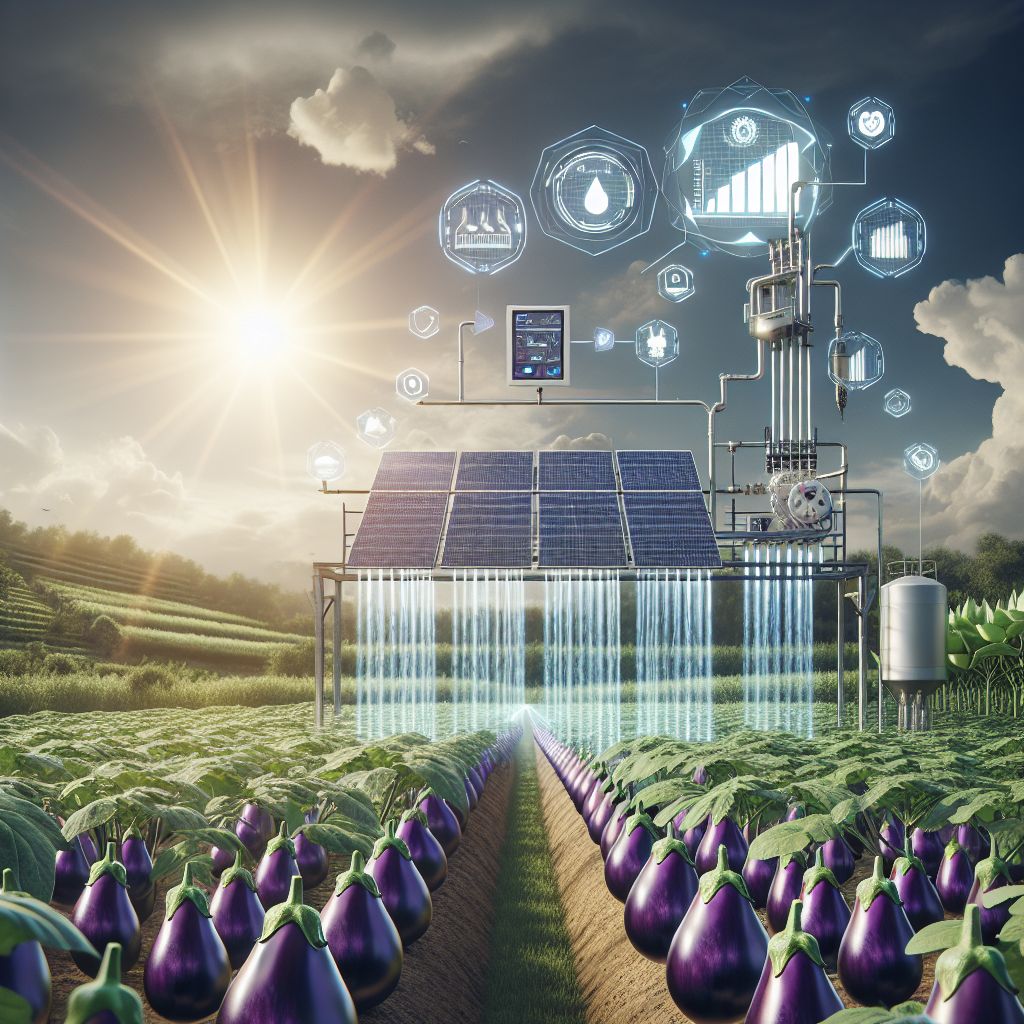
Conclusion: Having an Irrigation System is a Good Choice for an Eggplant Farmer, is Adding Solar-Power to it a Smart Decision?
Without a doubt, integrating solar power into an eggplant farm’s irrigation system is a wise move. It aligns with sustainable farming practices, reduces long-term costs, and supports the efficient use of resources. While the upfront investment may be higher, the benefits of lower operational costs and environmental impact make it a smart and responsible choice for the future of farming.
Frequently Asked Questions (FAQ)
As we wrap up, let’s address some common questions about solar-powered irrigation systems:
How Do Solar-Powered Irrigation Systems Conserve Water?
Solar-powered irrigation systems conserve water through precision. With the ability to operate more consistently and with better control, these systems deliver water directly to the plant’s roots, reducing evaporation and runoff. Paired with sensors, they can adjust to soil moisture levels, ensuring that plants receive the exact amount of water needed. Learn more about solar drip irrigation systems and how they benefit specific crops.
Are Solar-Powered Irrigation Systems Reliable and Consistent?
Yes, they are. Solar-powered systems are designed to store energy in batteries, ensuring that irrigation can continue even when the sun isn’t shining. Additionally, they’re engineered to be robust and withstand various weather conditions, making them a reliable choice for farmers.
Can Solar-Powered Systems Be Used in Areas with Limited Sunlight?
Solar-powered systems can be used in areas with limited sunlight, but they may require additional planning. This might involve using more efficient panels, increasing the number of panels to compensate for lower sun exposure, or incorporating battery storage to maintain a consistent power supply.
What Is the Expected Lifespan of a Solar-Powered Irrigation System?
The expected lifespan of a solar-powered irrigation system is around 25 years for the solar panels and about 10-15 years for the batteries, if used. Regular maintenance can help extend the lifespan of the entire system.
Where Can Farmers Get Funding or Subsidies for Solar Irrigation Systems?
Farmers can often get funding or subsidies for solar irrigation systems from government agricultural programs, renewable energy incentives, and grants from environmental organizations. It’s essential to research local opportunities and speak with solar installation companies that may have insight into available funding.







Leave a Reply